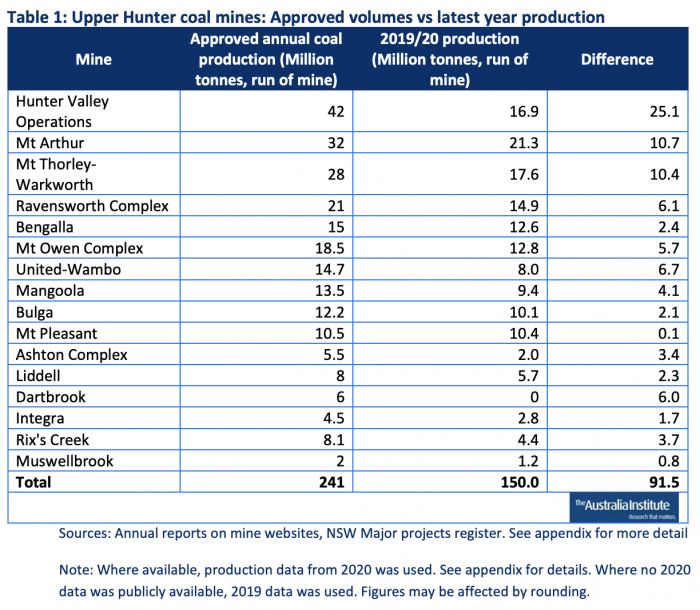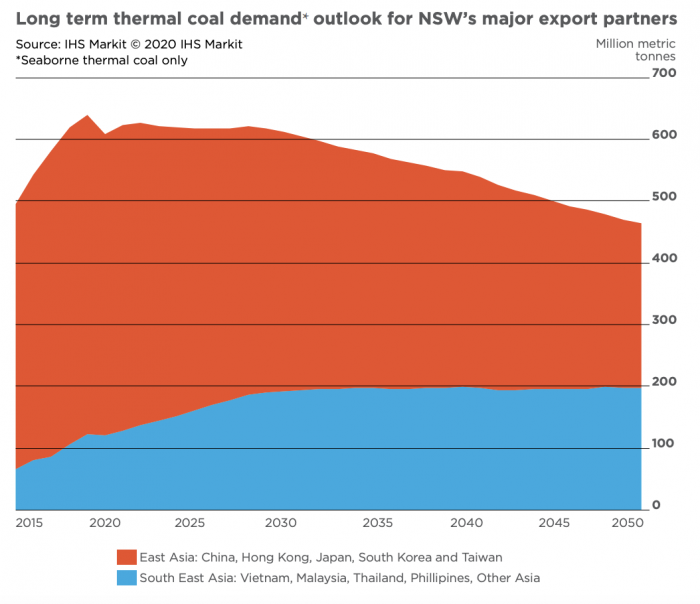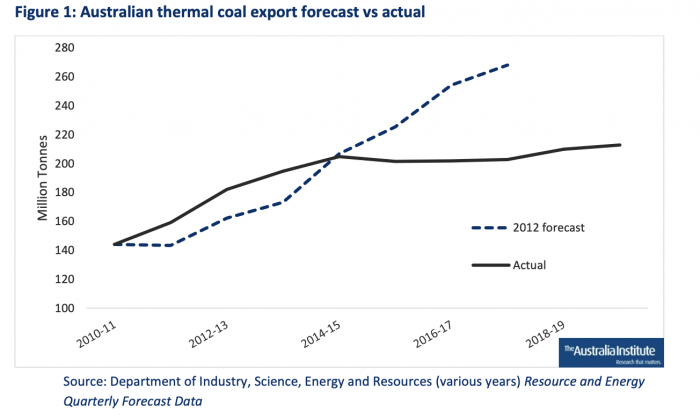Concern over Upper Hunter coal production gap
LAST night, the Australian Institute of Research hosted a “reality check” forum at Muswellbrook, discussing concerns over a 38 percent production gap in Upper Hunter coal mines.
The Institute released a report last week, highlighting an eight-year decrease in market demand and the consequent need for a moratorium on existing and new coal mines.
Rod Campbell, Research Director at the Australia Institute Think Tank Base in Canberra said a moratorium would allow for a gradual phase-out of coal whilst other energy projects develop.

Supplied by Australian Institute of Research.
“Mines have the approval to produce 241 million tonnes of raw coal per year, whereas they actually produced 150. When there’s a gap that big between what they could produce and what they are producing, it really undermines the economic case for new mines,” Mr Campbell said.
“Final coal sales from Hunter Valley mines peaked in 2014. There was a slight increase in 2020 compared to 2019, so this production gap has nothing to do with Covid-19. This is a long-term trend, not Covid-19 and China trade bans,” he said.
“Accepting the reality that the Hunter mines compete with each other, bringing in new competitors at this point, doesn’t benefit existing workers and existing mines, it just pits them against each other even further,” he said.
“When you leave proposals for major extensions and new mines sitting there, it means there are pretty significant areas of potential agricultural or other kinds of development that can’t go ahead. What this paper is showing is, existing mines can easily produce enough coal to satisfy demand, so we don’t have to have landholders dealing with uncertainty,” said Mr Campbell.
John Barilaro, Deputy Premier and Minister for Regional New South Wales, wholeheartedly disagrees with the prospect of a moratorium. He said he’s comfortable with where mining is at now and the market will determine future demand, as outlined in the government’s Future of Coal Statement (FOCS).

Supplied by NSW Government Future of Coal Statement.
“Firstly, it’s not possible to operate at full capacity at times, you’ve got to mine in particular ways, and we restrict how much you can mine in a particular way, certain tonnage that comes out but they’ve also got to plan for the future. These mines don’t go at one hundred percent all the way and exhaust, they’ve got to also plan for the future,” Mr Barilaro said.
“We’ve got a future of coal plan that shows clearly where there are future opportunities and where there aren’t. There’s a market that will determine demand, the market may pull away earlier than expected and under the future of coal statement but no there won’t be a moratorium,” he said.
“The export market continues to be strong; prices are high and our coal is the cleanest coal so it will be in high demand,” he said.
“This idea of a moratorium, it makes no sense. We have an IPC (Independent Planning Commission), that clearly puts in place and assesses these applications. The Australian Institute has its view, it’s a left-leaning organisation, let’s not pretend. If you go to the reports from the Mining Minerals Council, they’ll have the opposite view. These companies would not be investing hundreds of millions of dollars if there was no future, it’s simple,” said Mr Barilaro.
Mr Campbell said the government should be planning for realistic future demand rather than leaving it to the market, as previous “wild forecasting” has turned out to be wrong.
“If you take yourself back to 2011, coal prices, sales, demand had grown year on year since 2000 and the forecasts for that growth were predicting it would just keep on going. Every coal proposal looked like it was going to make money and be viable because everyone was forecasting huge growth,” Mr Campbell said.

Supplied by the Australian Institute of Research.
“We have charted the official forecasts for coal demand and you can see in 2012, everyone was expecting this boom to go forever and it just hasn’t. I think the mining industry and people working in the mines know this, but the political rhetoric has never caught up,” he said.
“The boom’s over, the demand we thought was going to be there isn’t, so have we approved a hell of a lot of capacity based on a demand that we thought would be there but has never materialised?” he questioned.
“The current system and current approvals are based on some pretty wild forecasting that turned out to be wrong. Let’s start turning that around and plan for what’s to come next,” said Mr Campbell.
Tags: coal production, coal production gap, Upper Hunter coal mines
 scone.com.au
scone.com.au